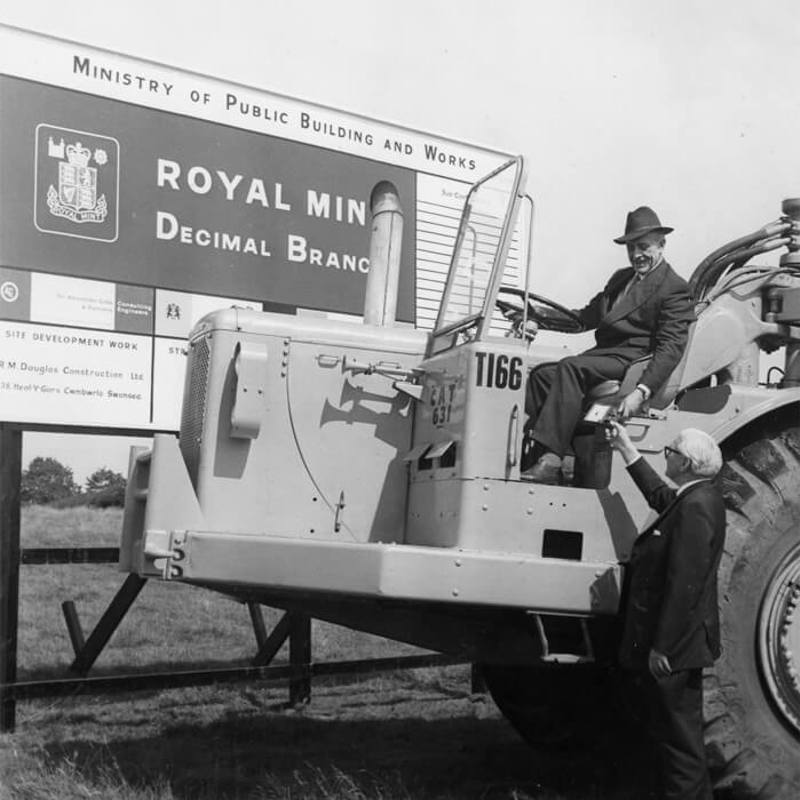Find out more

London to Llantrisant
Discover the fascinating story behind the Royal Mint’s move from London to Wales.

Events
Learn about the events and activities that marked the development of the Mint in South Wales.
Learn about three men who were pivotal to the relocation, construction and organisation of the Mint during its early years in Llantrisant.
Jack James, as Deputy Master at Tower Hill, was a crucial figure in the modern history of the Royal Mint. Appointed in 1957, he was a proud and tenacious man with a fierce intelligence who described himself as ‘a weird combination of industrialist, civil servant and palace servant’. His determined and decisive leadership succeeded in transforming the output and organisation of the old Mint at Tower Hill; and when the introduction of the new decimal coinage was announced it was James along with the Chancellor of the Exchequer, James Callaghan, who masterminded the move away from London.
The unprecedented challenge of establishing production in Wales required all of James’ considerable abilities. A skilful and subtle operator who often distanced himself from day-to-day business, he understood the importance of treading a delicate path between the workforces in Wales and London.
Once the initial decimalisation programme was complete and the move to Llantrisant secured he stepped down as Deputy Master in October 1970. His services were recognised by the award of a knighthood.
In March 1966 the Chancellor of the Exchequer and Master of the Mint, James Callaghan, announced that the historic system of pounds, shillings and pence would be replaced by a decimal currency. In order to build up the necessary stockpile of new decimal coins by what became known as ‘D Day’ in 1971, Callaghan, along with the Deputy Master of the Mint, Jack James, supported the idea of moving coin production away from London and onto a new site.
His support for a site in Wales was crucial and in February 1968 he came to Llantrisant to lay the foundation stone for the new Royal Mint decimal branch. At that ‘short but impressive ceremony’ he said that the relocation of Mint production to Llantrisant was one of the things for which he wished to be remembered.
In 1993 as guest of honour at the celebration of the twenty-fifth anniversary of the opening of the new Royal Mint, he reflected proudly on a success in which he had played a significant part.
Click here to watch an interview with Callaghan about the move to Llantrisant.
Originally from Newport in South Wales, Bob Yates was appointed as Superintendent-in-Charge at the new Royal Mint in Llantrisant in November 1968 shortly before it was opened by the Queen. Coming to the Mint with a degree in engineering and experience from working in private industry, he was responsible for installing machinery of an advanced technical design, and for supervising the training of local employees in modern technical processes to ensure that the decimal stockpile was ready in time for D Day in February 1971. That this was achieved speaks well for a new Mint with new machinery and a largely new workforce, and for this Bob Yates deserves credit.
Forceful and ambitious, in 1971 he became Director of Production in Llantrisant and at Tower Hill. As part of his role, he supervised the construction of Phase II of the new Mint, which included the building of a Melting, Rolling and Blanking unit to house the largest non-ferrous melting facility in Western Europe. He retired from the Mint in June 1979.

Discover the fascinating story behind the Royal Mint’s move from London to Wales.

Learn about the events and activities that marked the development of the Mint in South Wales.